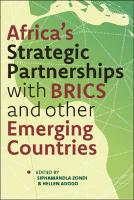Korean diplomacy in Africa: Three phases of Korea–Africa relations

Suweon Kim and Tycho van der Hoog describe the lesser-known yet significant relations between the Korean peninsula and the African continent, with special attention given to the inter-Korean rivalry for diplomatic recognition that existed during the second half of the 20th century. Their chapter in the book Africa’s Strategic Partnerships with BRICS and other Emerging Countries follows the transformation of the Korean rivalry in Africa by periodising Korea–Africa relations into three significant phases.
The first phase (1953–1972) was marked by North Korean success and South Korean isolation. Pyongyang’s message of anti-imperialist solidarity resonated with 293Africa’s Strategic Partnerships with BRICS and other Emerging Countries several African states, whereas South Korea was limited by a restrictive foreign policy strategy. The second phase (1972–1990) was influenced by the Sino–American détente that caused South Korea to change its strategy and ramp up its diplomatic efforts in Africa. The third and current phase (1990–the present) is a reverse image of the first phase: while Seoul is an attractive partner for African governments on account of its economic prosperity and soft power, North Korea seems largely isolated or is engaged in illicit activities that are prohibited by UN sanctions.
This chapter has been published in Africa’s Strategic Partnerships with BRICS and Other Emerging Countries (chapter 16, open access).
Author(s) / editor(s)
Suweon Kim and Tycho van der Hoog
About the author(s) / editor(s)

Tycho van der Hoog is a former PhD candidate at the African Studies Centre Leiden. He successfully defended his dissertation (under embargo until 7 May 2026) on 7 May 2024.
His dissertation, titled ‘North Korea and the Liberation of Southern Africa, 1960-2020’ seeks to reveal the ties that bind North Korea to the African continent. His monograph Monuments of Power: The North Korean Origin of Nationalist Monuments in Namibia and Zimbabwe was published by the African Studies Centre Leiden in 2019. His monograph Breweries, Politics and Identity: The History Behind Namibian Beer was published by Basler Afrika Bibliographien in 2019.
He is the recipient of the BISA African Affairs Postgraduate Paper Prize 2021.
Posted on 26 August 2025, last modified on 28 August 2025

